
As a motorsports enthusiast, growing up in a non-automotive-oriented family has its ups and downs. I was brought up playing team sports every weekend, which helped me learn a number of life lessons at an early age, many of which I still retain and use today. However, my childhood also deprived me of any semblance of the vast automotive culture I have grown to adore today.
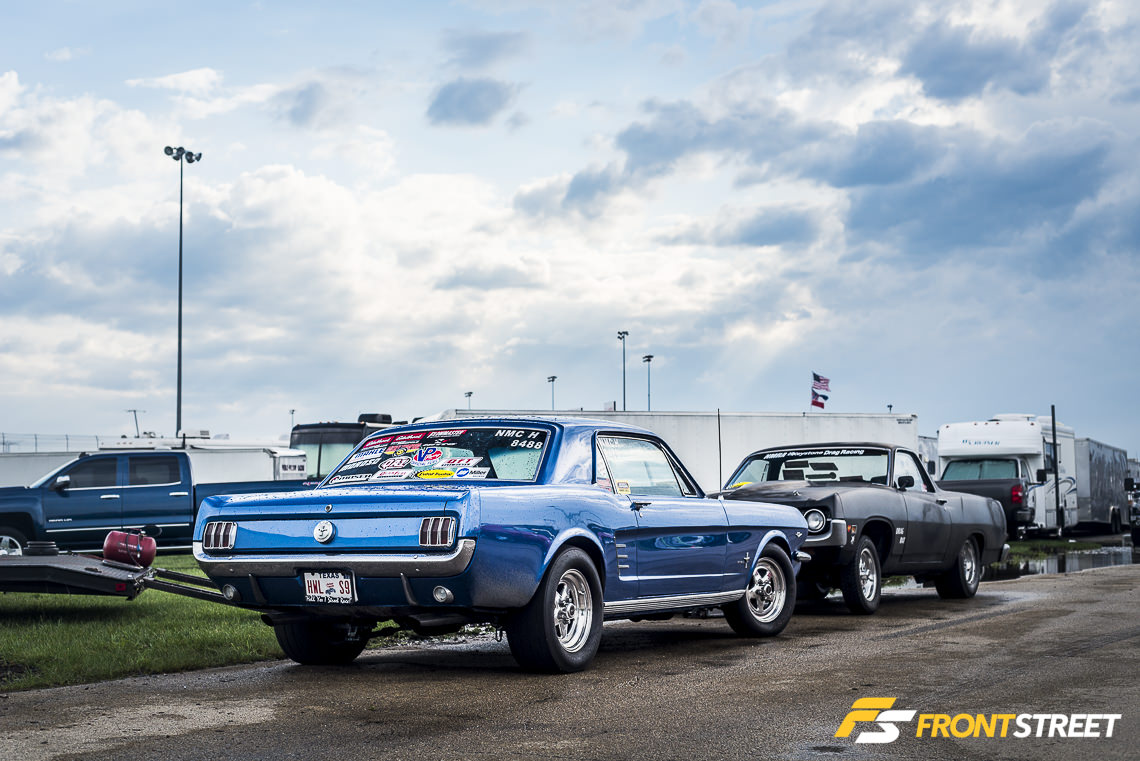
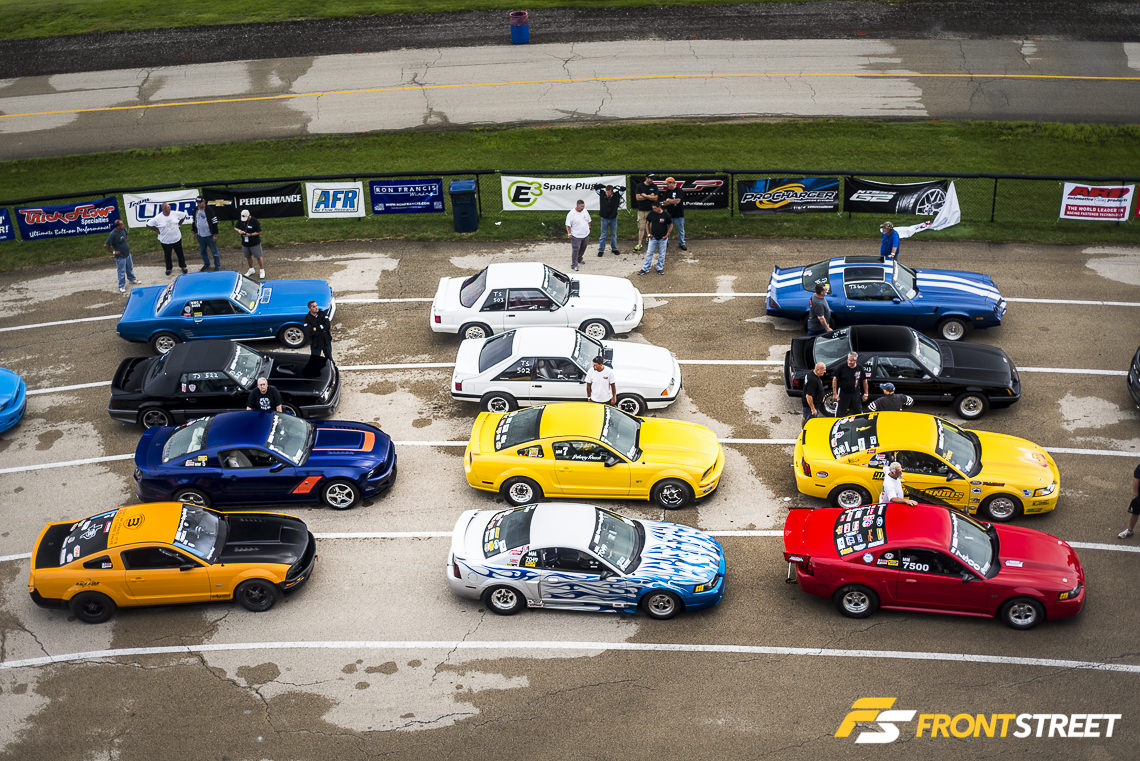
My automotive exposure as a child was limited to my Hot Wheels collection, and the single day each year where my hometown shut down its main road to showcase the local’s collection of restored classics – until my twelfth year on this Earth, when I attended my first Friday night drag racing event at Atco Raceway in New Jersey. For a kid who had never witnessed motorsport competition first-hand up until that point, it was an eye-opening experience to say the least. I was enlightened to a world where a vehicle could be pushed to the limit, head-to-head against another vehicle. That night at Atco Raceway showed me a competitive atmosphere that blended the skills of man and machine to prove who could be fastest down the quarter-mile, and changed my automotive admiration forever. Fast forward fifteen years and I’m offered the opportunity to cover the king of domestic drag racing events – the NMRA/NMCA Super Bowl of Street Legal Drag Racing held at Route 66 Raceway in Joliet, Illinois.
This enormous event combines 30 race classes from the National Mustang Racer’s Association (NMRA) and the National Muscle Car Association (NMCA) as they do battle throughout the weekend. At the conclusion of the individual eliminators, the two groups face off head-to-head in the Super Bowl portion of the event, where the winning series takes home an extra payday in the form of the exclusive Nitto Tire Diamond Tree ring, a trophy sought after by many but earned by few racers.
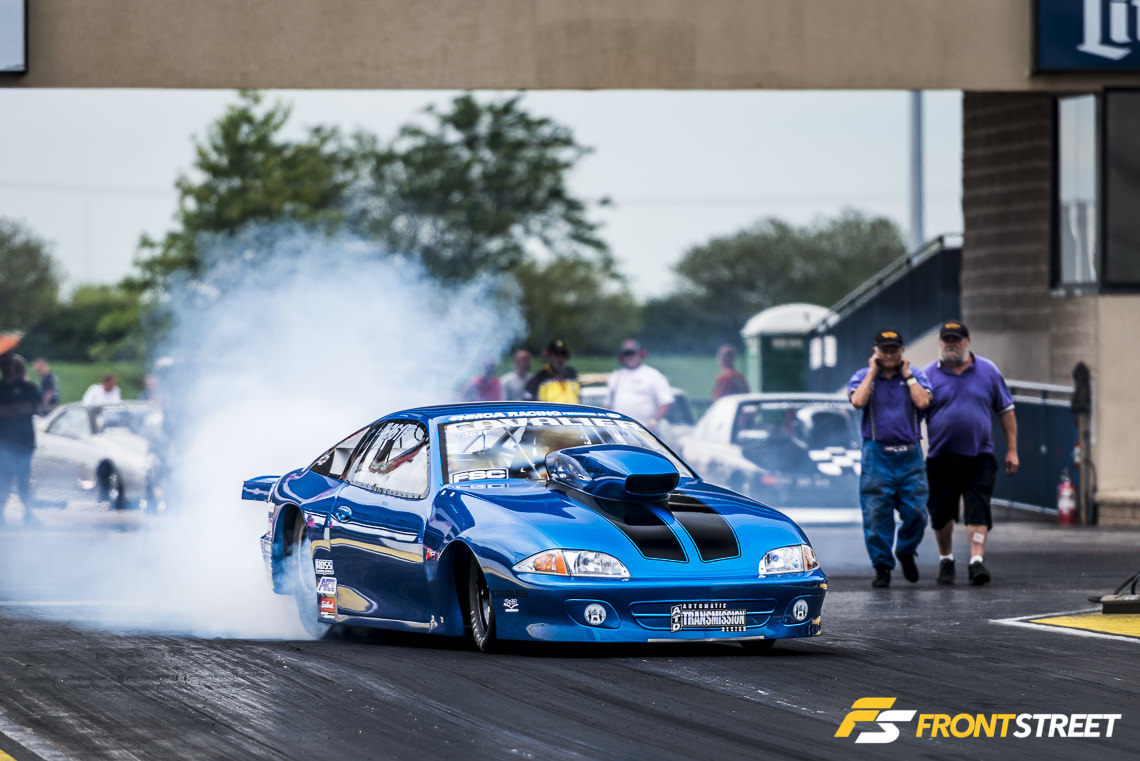
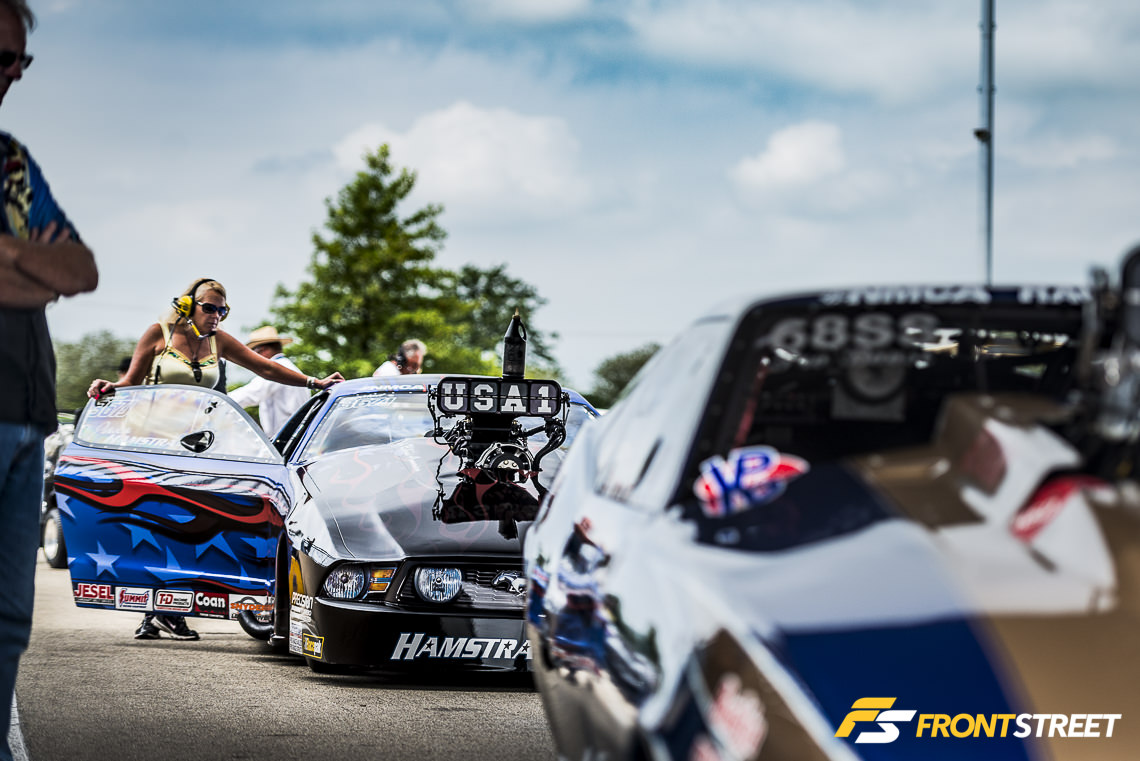
A door-slammer event of this magnitude could only be hosted at a handful of professional drag strips due to its size. Enter Route 66 Raceway; this 250-acre lot not only houses a quarter-mile dragstrip, but a half-mile dirt oval track. This gives the pit area more than enough room to host every team and their associated rigs.
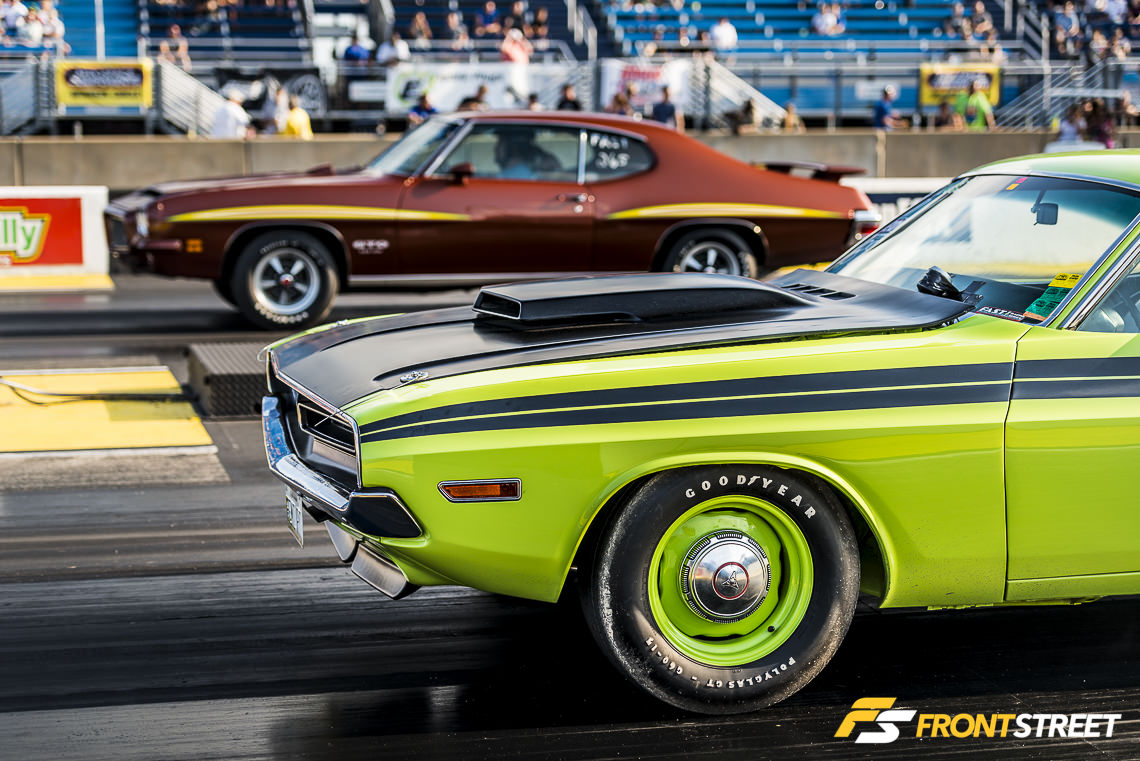
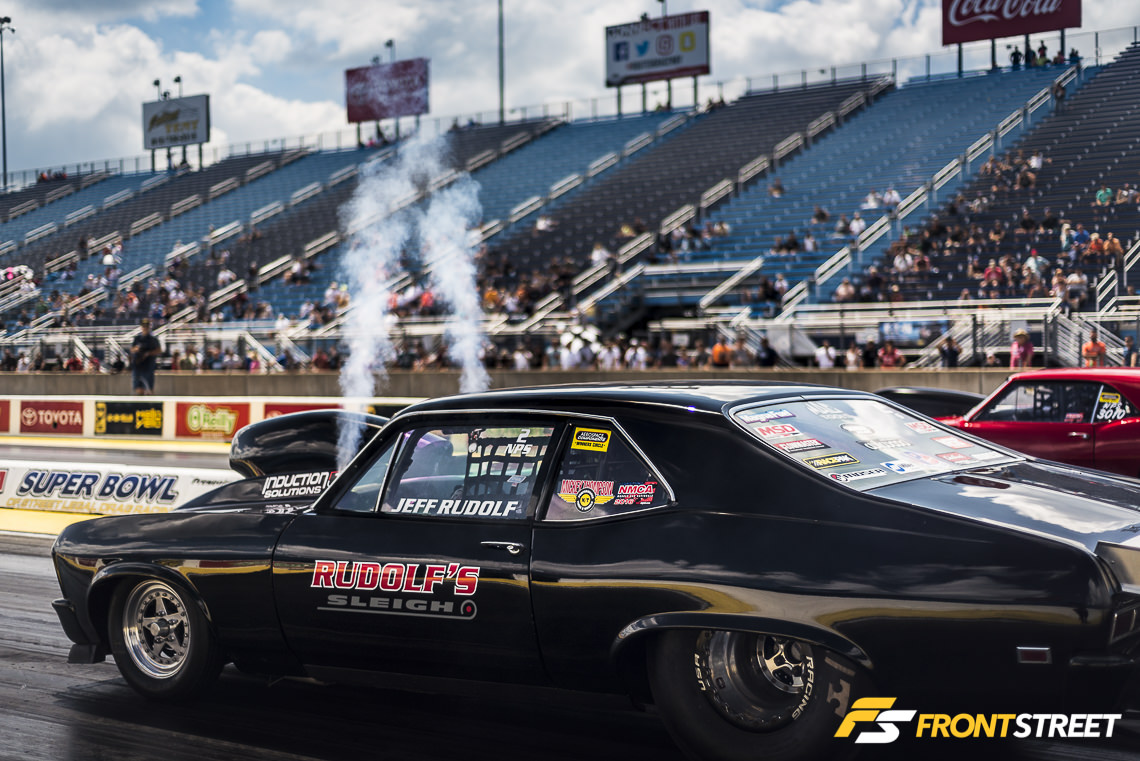
Now back to my earlier years for some more background. Once I became old enough to drive, I frequented the popular dragstrips in New Jersey in an attempt to hone my driving skills and exercise my competitive attitude behind the wheel of my daily-driven street car. I did my research early on and figured out that a quick reaction time off the starting line is the easiest way to gain an advantage heading down the stretch of tarmac.
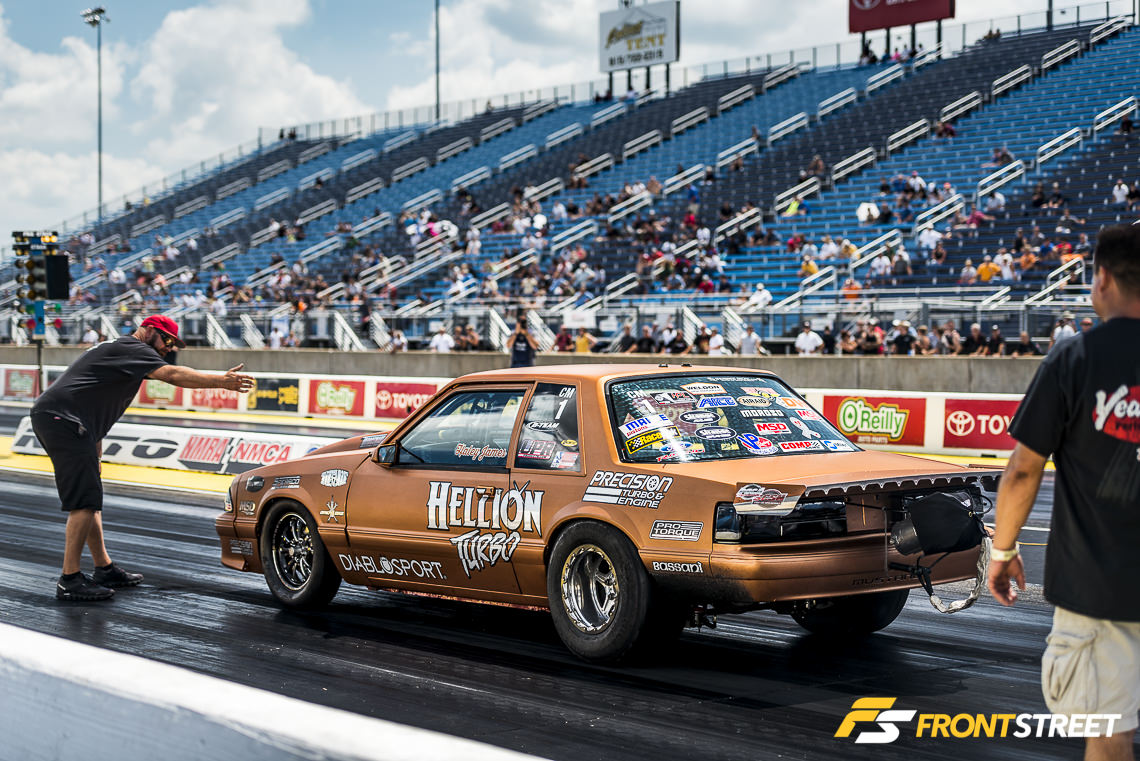
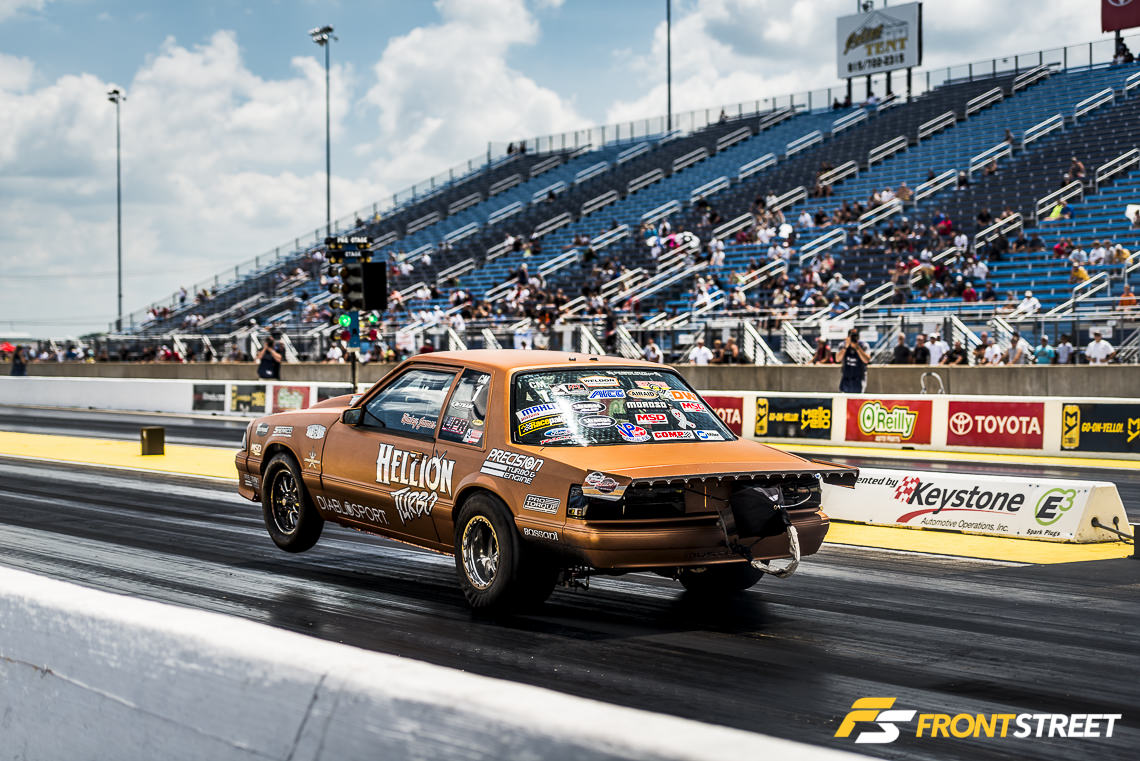
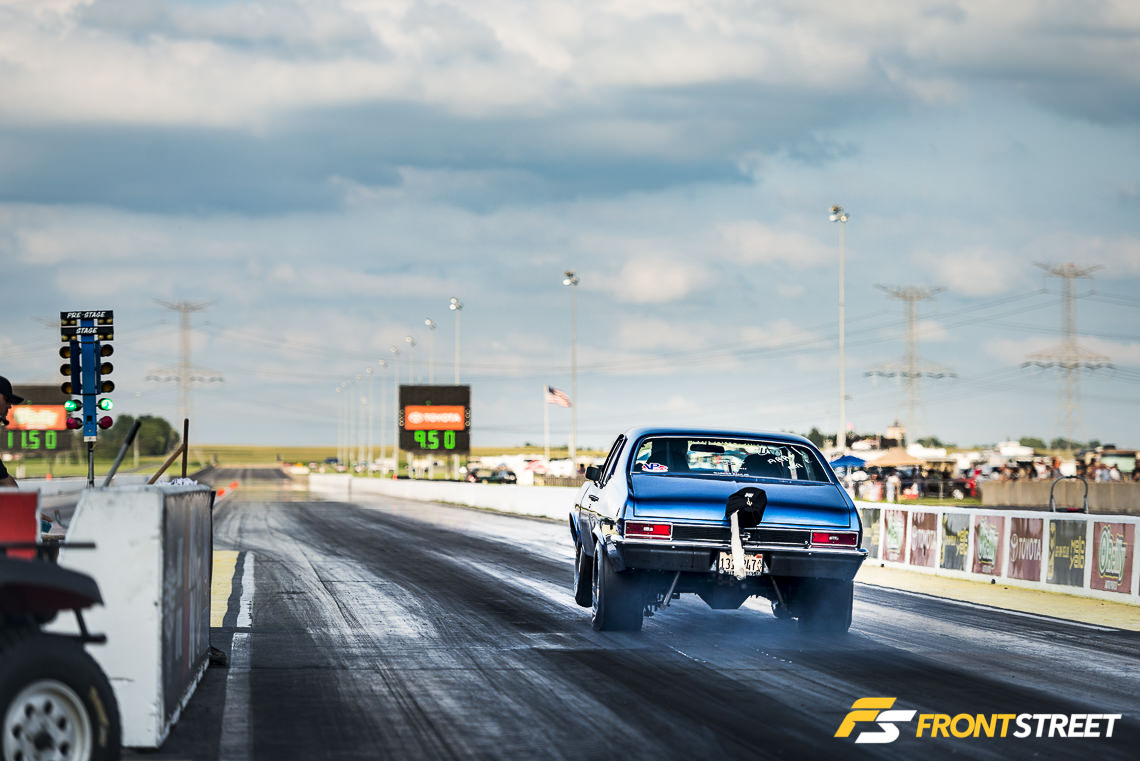
The tree – a tower of multicolored lights that begins the drag race with an ignited green light bulb – has the ability to alter the fate of those who approach it. Launch your car quickly, and you’ll be in front of your competitor immediately. Wait too long, and you’ll be staring at the back of the other car for the remainder of the track.
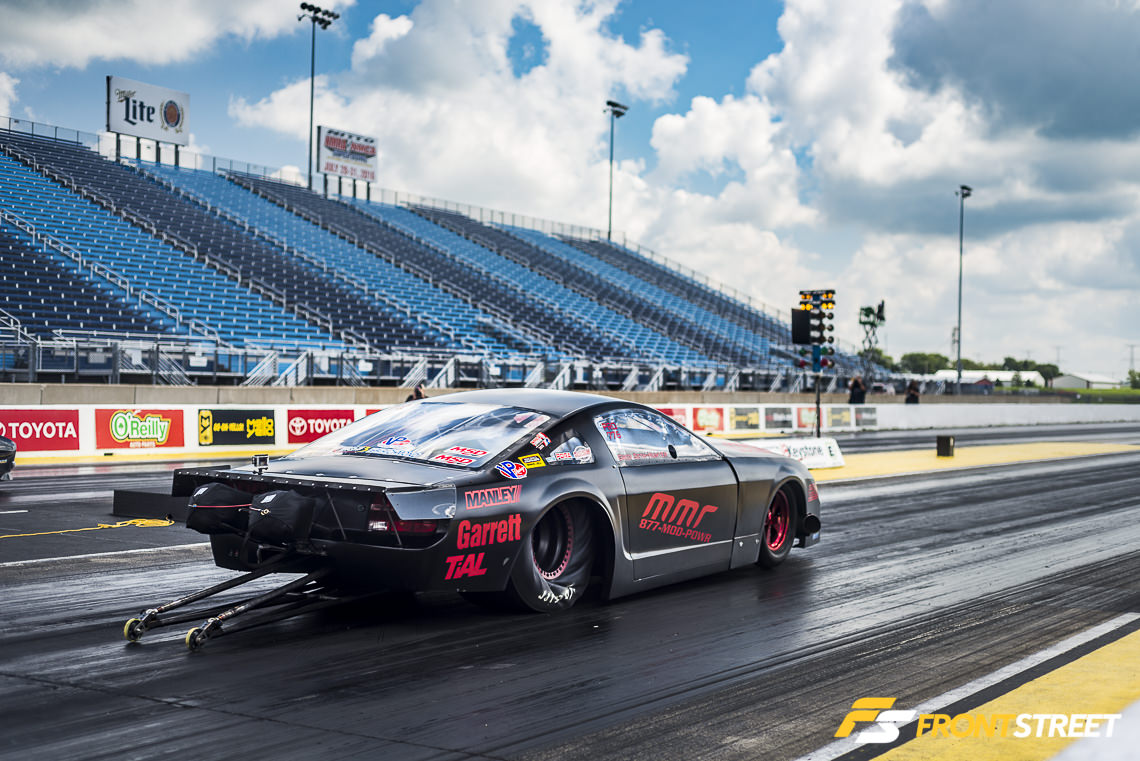
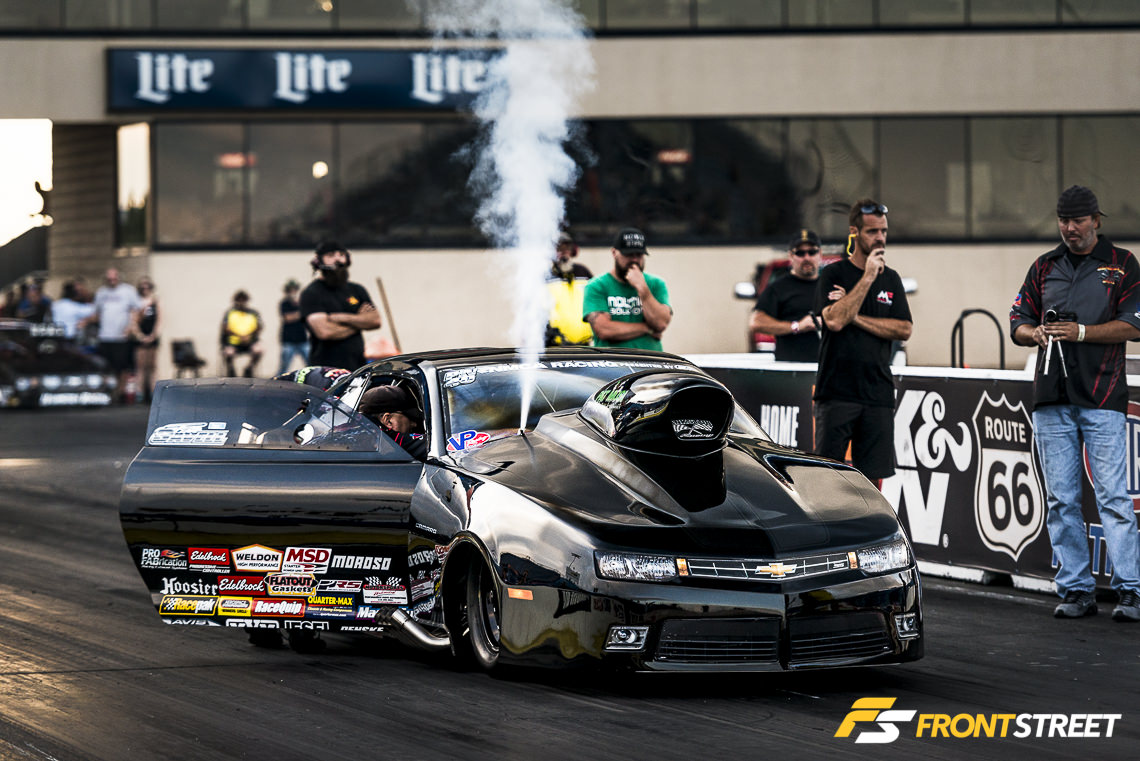
In the normal world filled with traffic lights, green means go. Contrary to this, a well-known trick in the drag racing world is to actually leave the line just before the green bulb ignites, as the reaction time of the driver and vehicle will be just enough to prevent the red light, which is set alight when the reaction time is too quick. This guessing game of timing will make a tenth, hundredth, or even thousandth of a second difference in a drag race, but this miniscule difference pays off when it’s the deciding factor between winning and losing. Most race classes at the Super Bowl of Street Legal Drag Racing utilize a .400 Pro Tree, which is where the amber lights blaze, then the green light comes on after a .400-second delay, but certain classes use a .500-second delay. Learning how to navigate this delay effectively is part of the challenge of drag racing, where it’s man and machine against the clock.
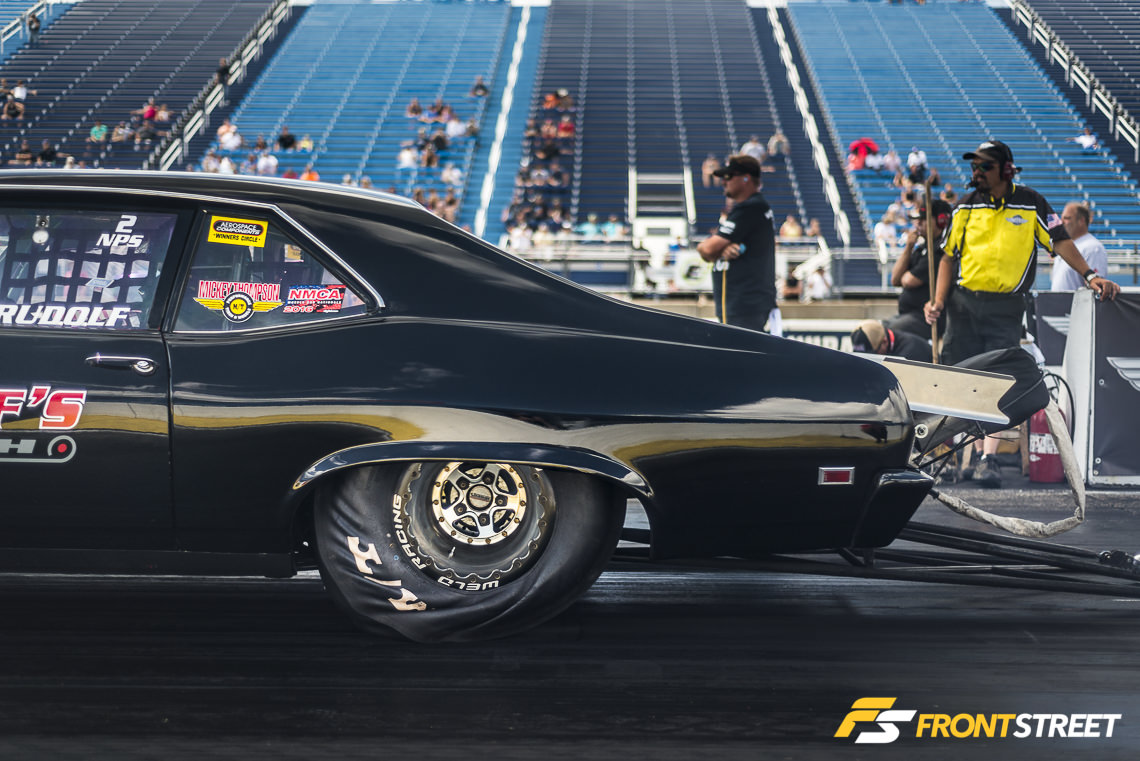
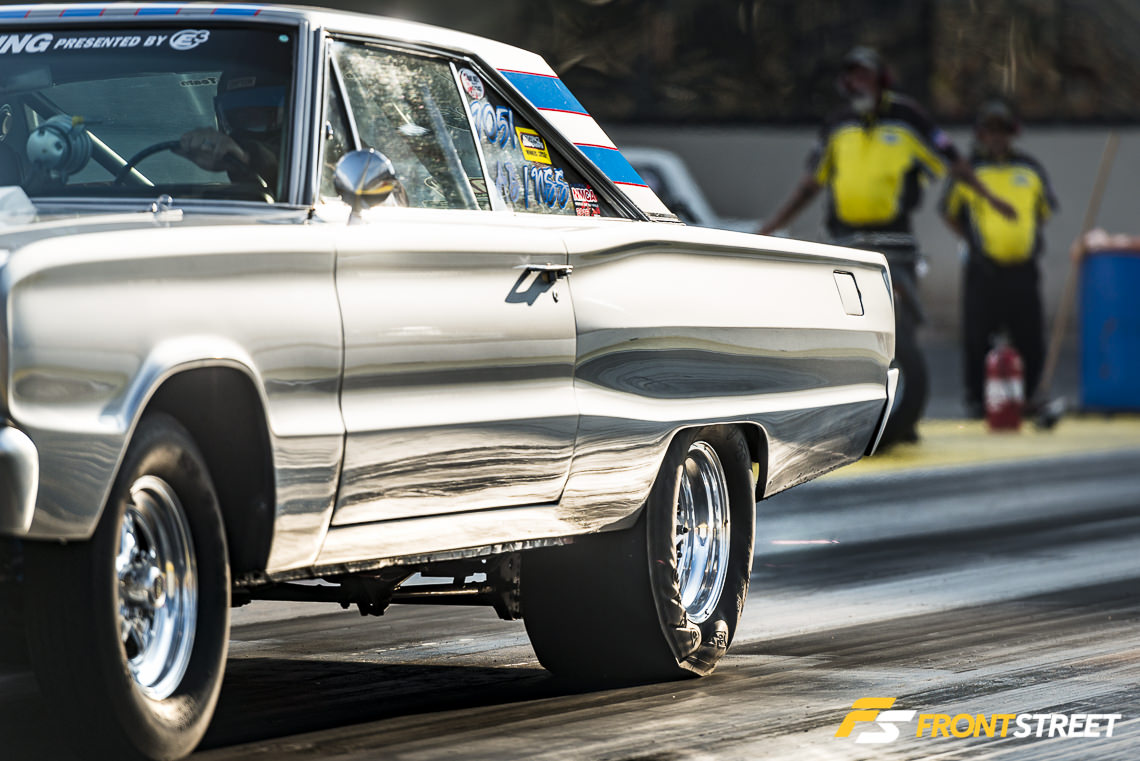
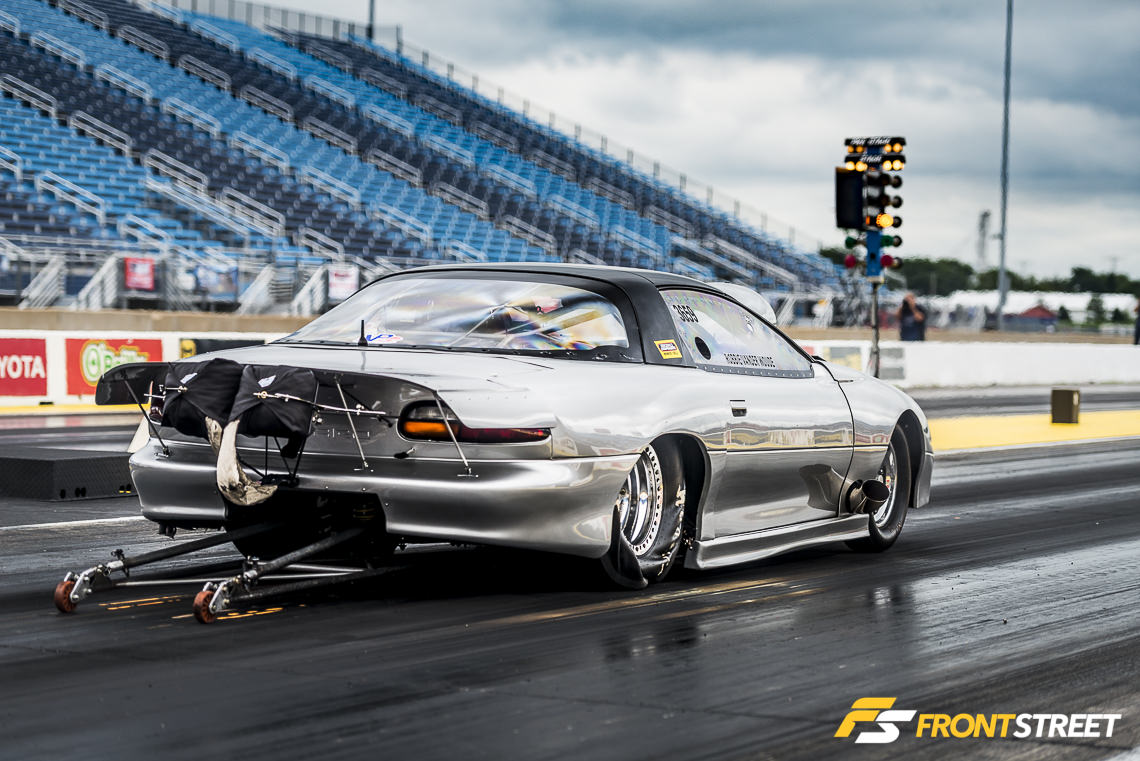
All weekend long racers played this game, as their massive slick tires wrinkled under stress before the green light granted their departure. The visual symbol of the dreaded red light notifies racers that their car left the starting line too soon, and they are disqualified before they even had the chance to drive.
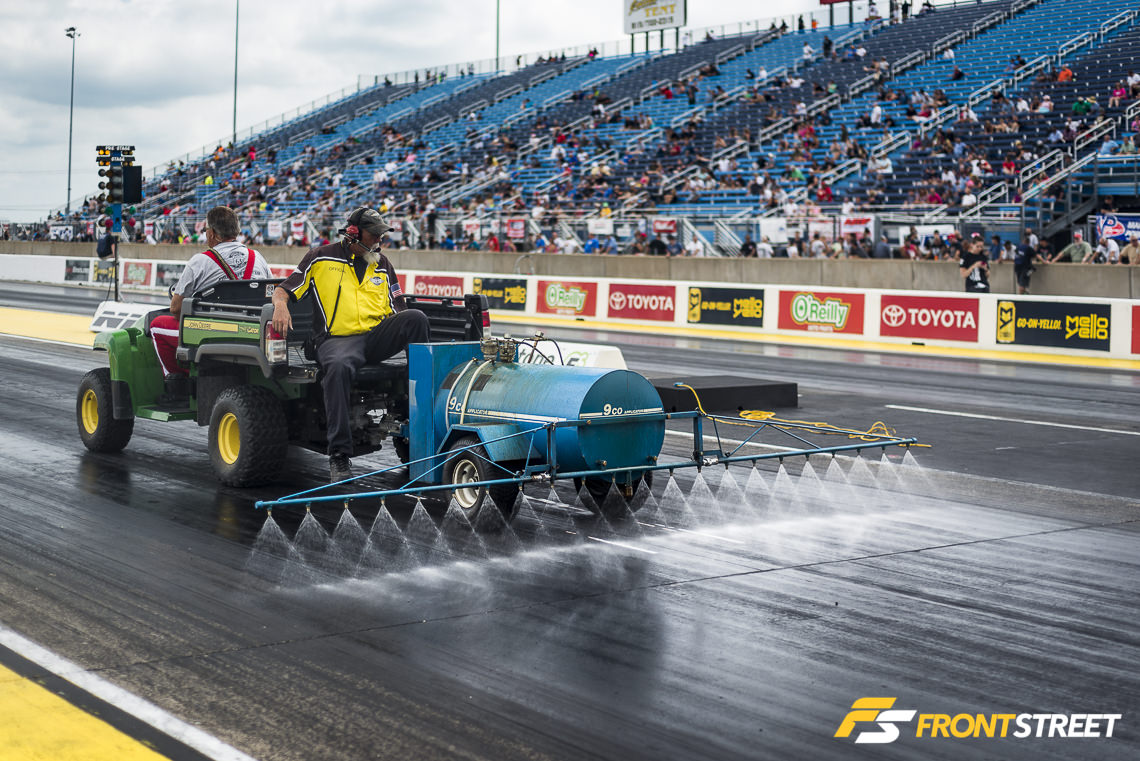
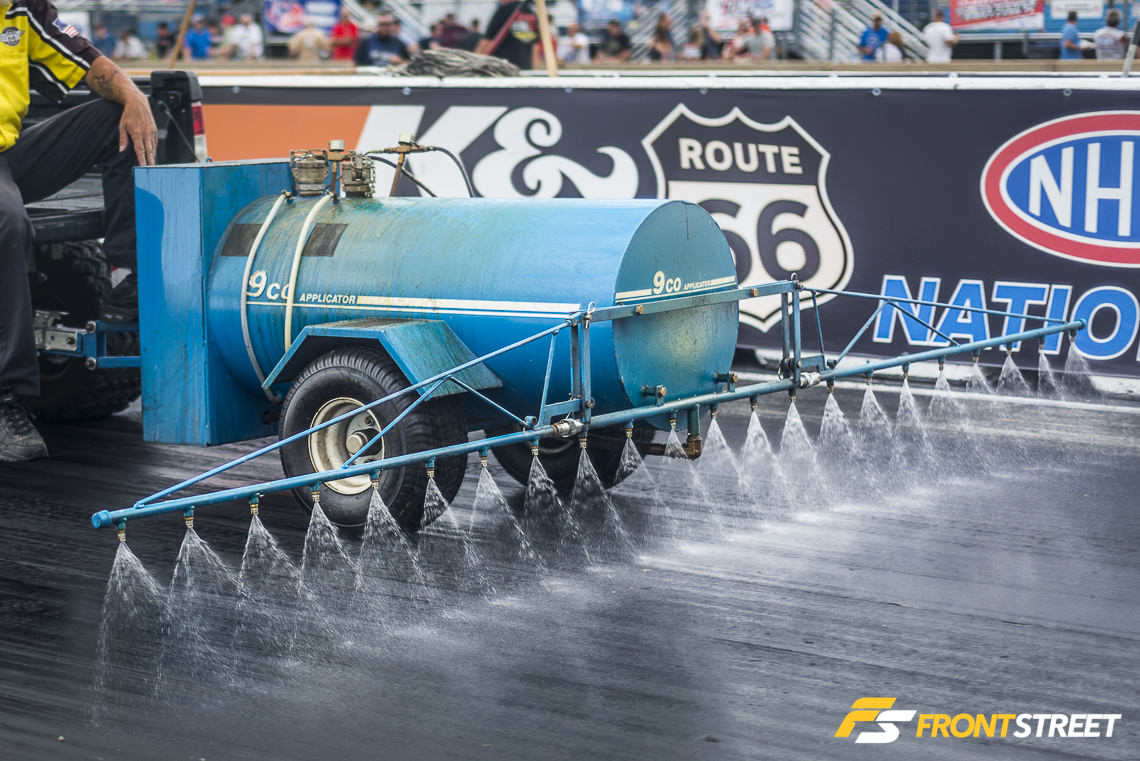
Drag racing is quite basic at its core. It’s a balance of torque and grip produced by a machine, matched with the quick reactions and skill of its operator to create the highest amount of speed in a designated distance. Okay, maybe it’s not so basic. In fact, the sport is extremely complicated at the level of competition seen in the NMRA and NMCA ranks. Everything and anything that’s not executed to perfection can be a deciding factor in a particular matchup, and there are even precautionary measures taken by the hosting racetrack to ensure every machine can compete to the highest standard. To maximize tire grip, the racetrack sprays this glue-like resin along the track surface.
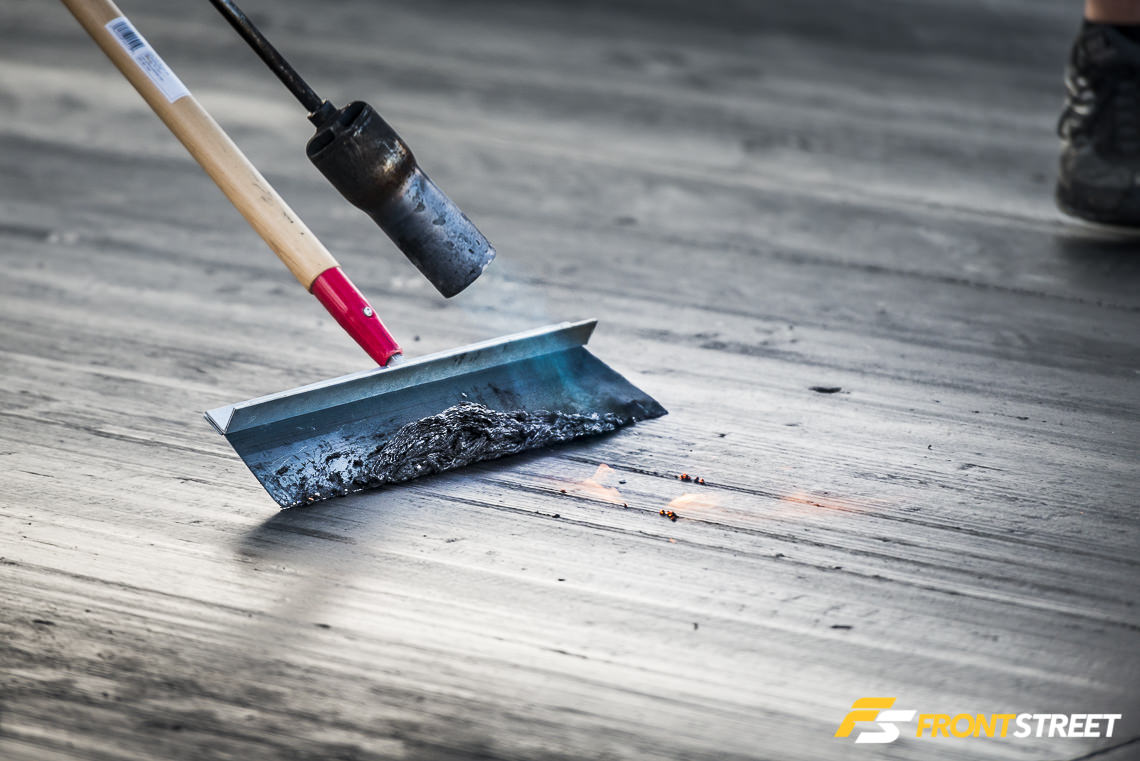
They also prepare the racing surface in order to keep it as smooth and sticky as possible. Using a large torch, they heat up the layer of rubber residue left on the racetrack from multiple previous races, and then scrape it off using a metal straight edge. This rids the surface of any bald spots and other sections where traction is not ideal, and allows the track maintenance staff to prepare the concrete for maximum adhesion. It is a constant battle for the track staff to maintain the surface; different types of racing vehicles like different styles of preparation, and the elements also come into play. If the sun is harsh and the track surface extremely hot, as can happen at the Super Bowl event, they use a different type of preparation than if it were cool and overcast.
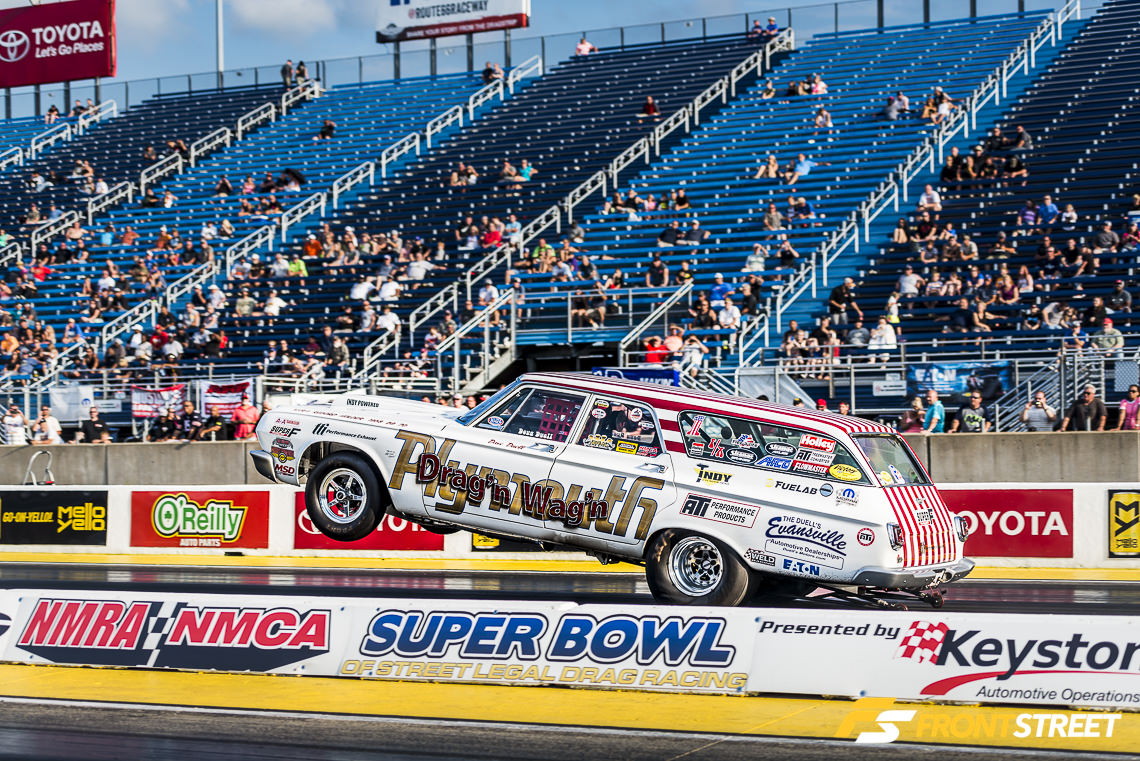
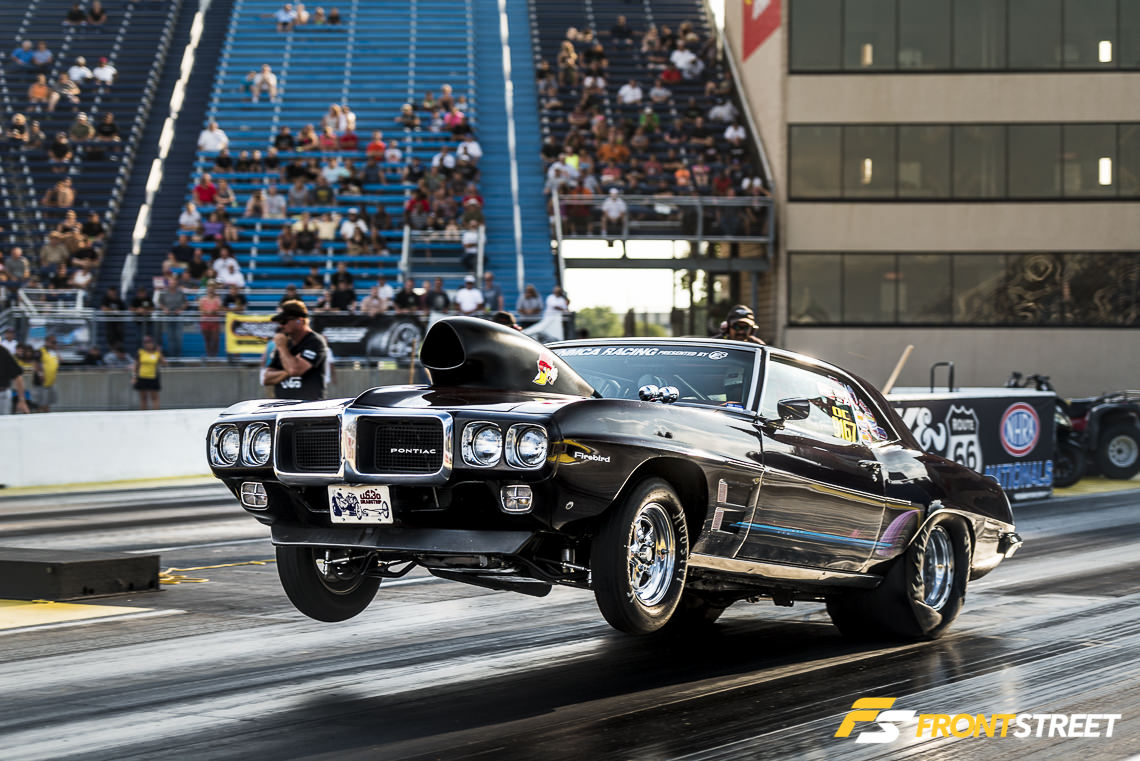
These steps to improve the traction of the cars results in maniacal displays of grip called wheelstands, which lift the front end of the cars into the air as they accelerate.
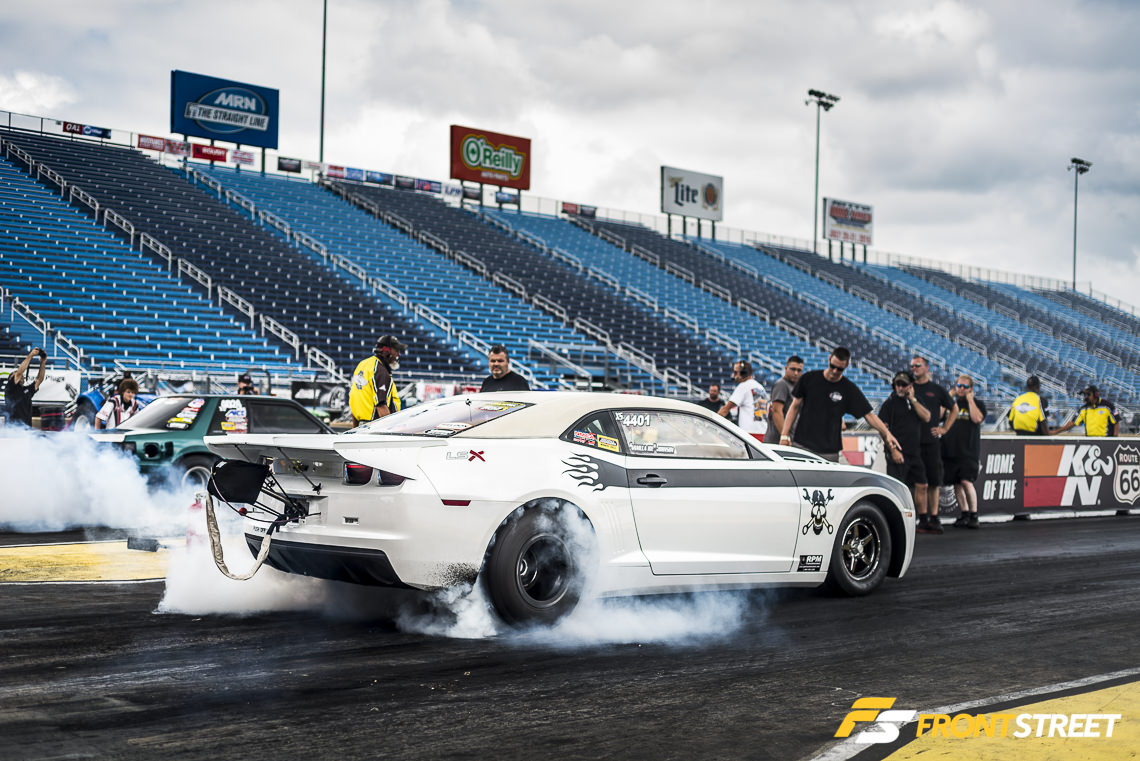
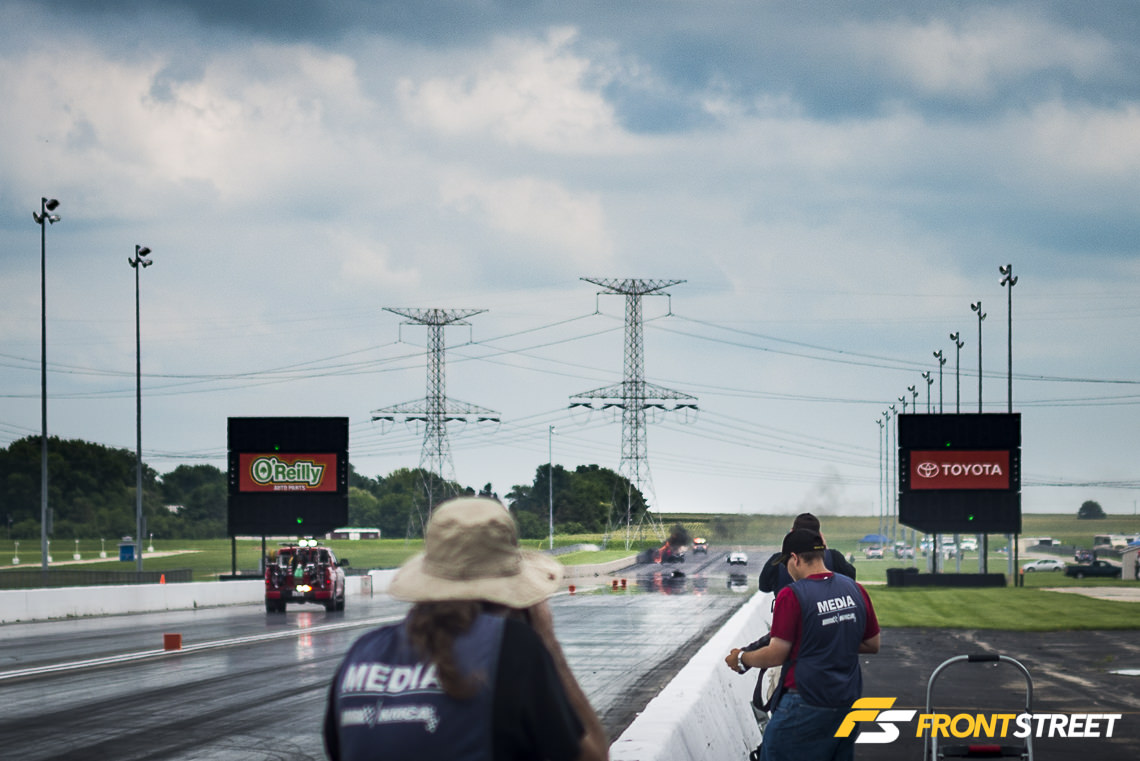
Unfortunately, like any professional sport there are injuries. Over the years, racing associations have implemented a wide range of safety measures. In many cases, the vehicles are the competitors that suffer the most injuries at a typical drag race. This event was no different as a piece of the left lane’s teal Fox-body Mustang broke at the very end of the racetrack, sending the car careening towards the concrete barrier at an approximate speed of 175 miles per hour. Upon its collision, the car almost immediately erupted into flames. The driver escaped from the vehicle safely, sparing himself from the inferno that ensued, but unfortunately his chariot was ruined in the process. Incidents like this stop the action on track while every inch of the soiled racetrack is cleaned. This gave me the perfect excuse to walk the pit area and take in the atmosphere of the event.
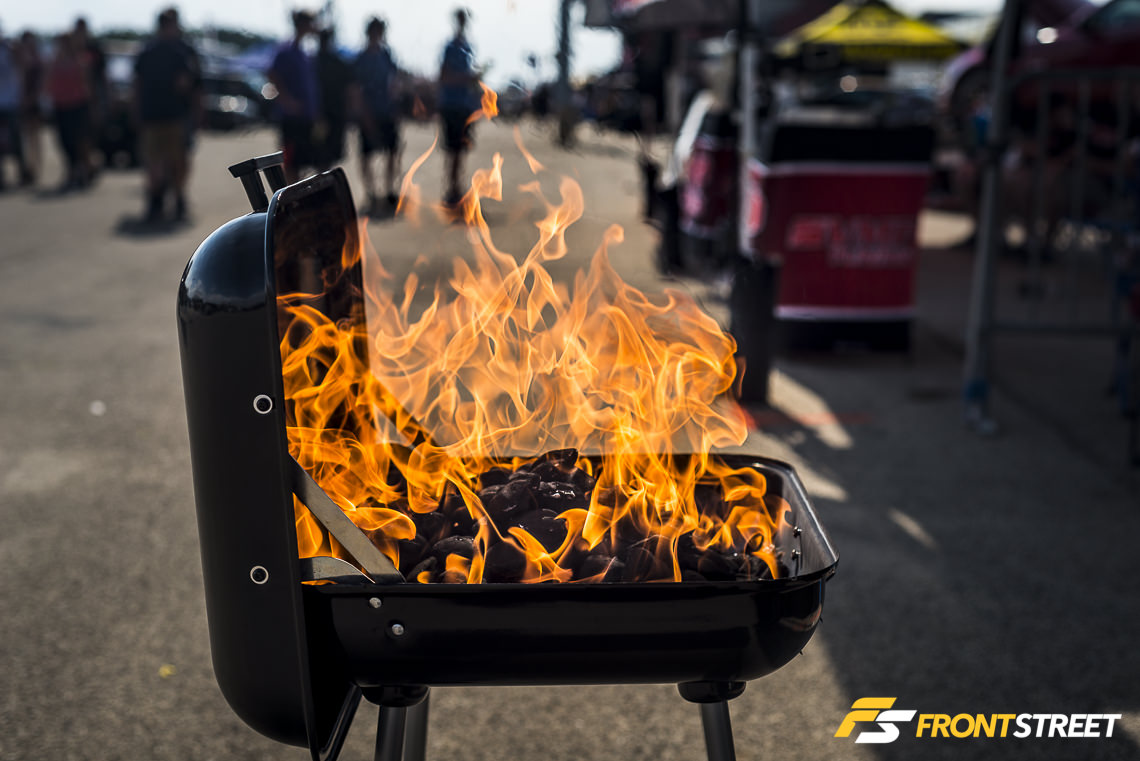
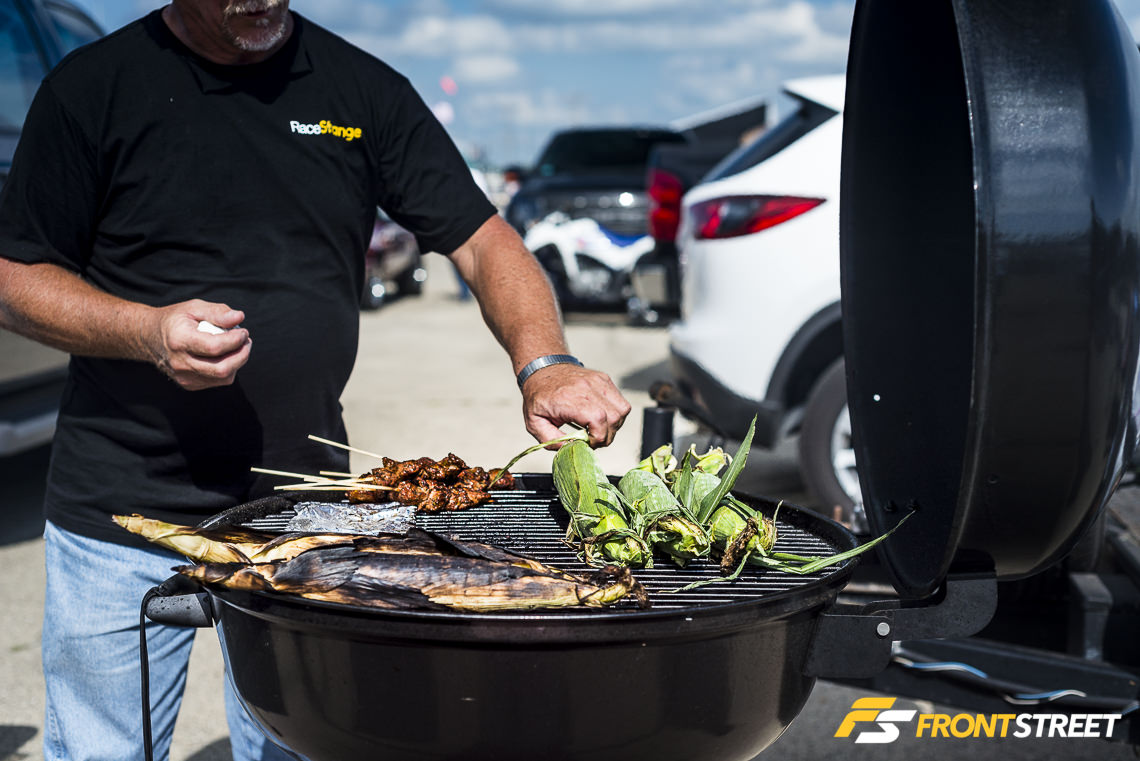
Speaking of flames, located behind racecars under tents there were barbecues taking place all weekend long in every row of the pits. I was welcomed into the pit area of the Leslie family, where I was given helpings of delicious pork kabobs, grilled corn on the cob, bratwurst, burgers, and plenty more. The company of their Golden Retriever puppy was an added bonus.
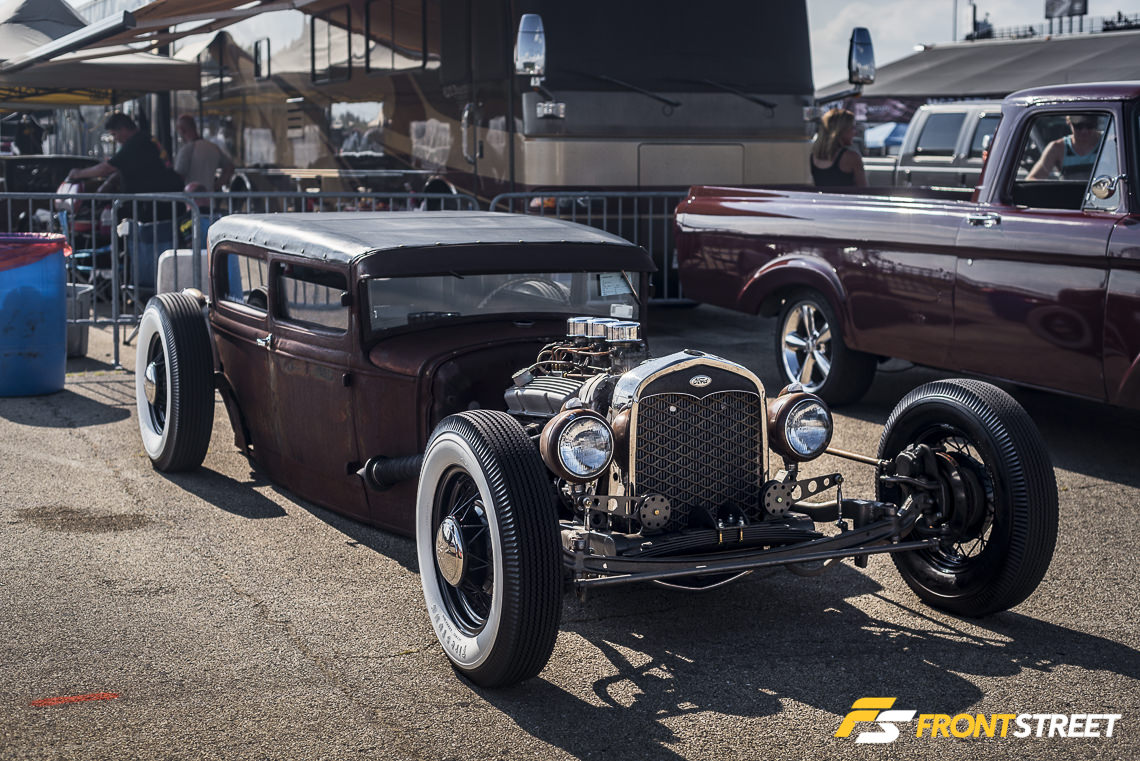
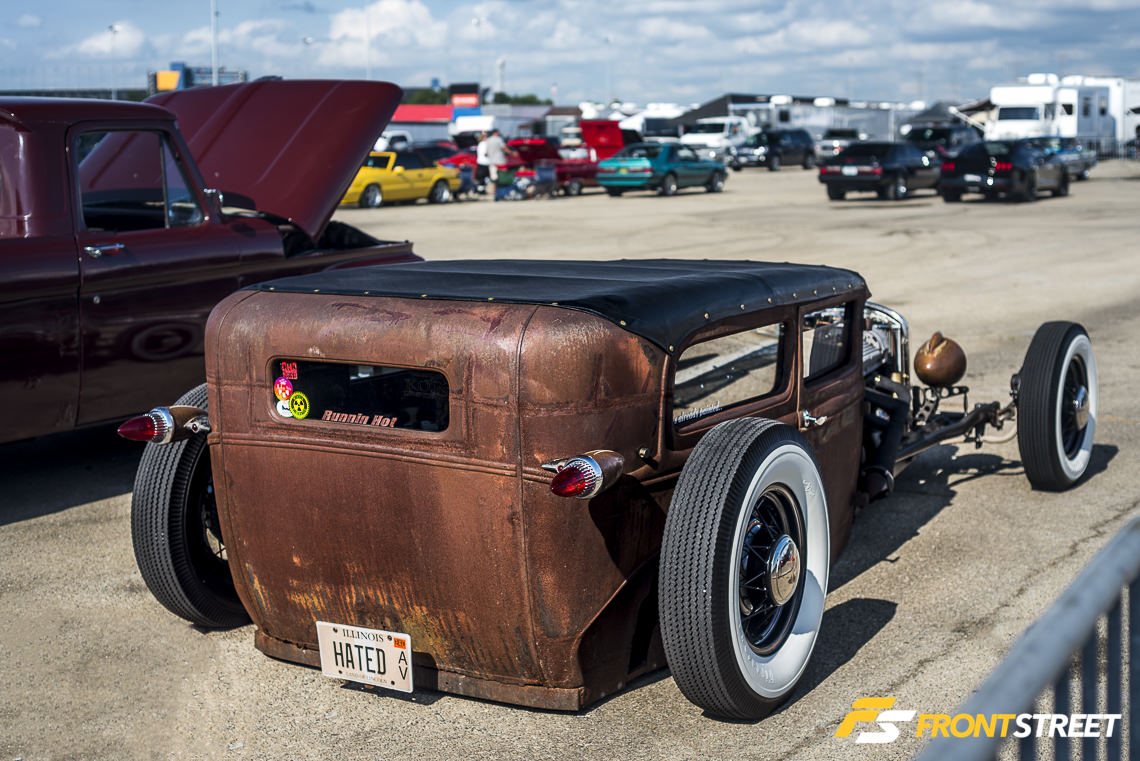
I also had ample time to walk around the car show. Tons of classic and modern interpretations of domestic muscle populated this area. Examples like this old rat rod showed that cars don’t need to be shiny at a car show. The chopped and sectioned roof hosted a leather top on the ultra-low body.
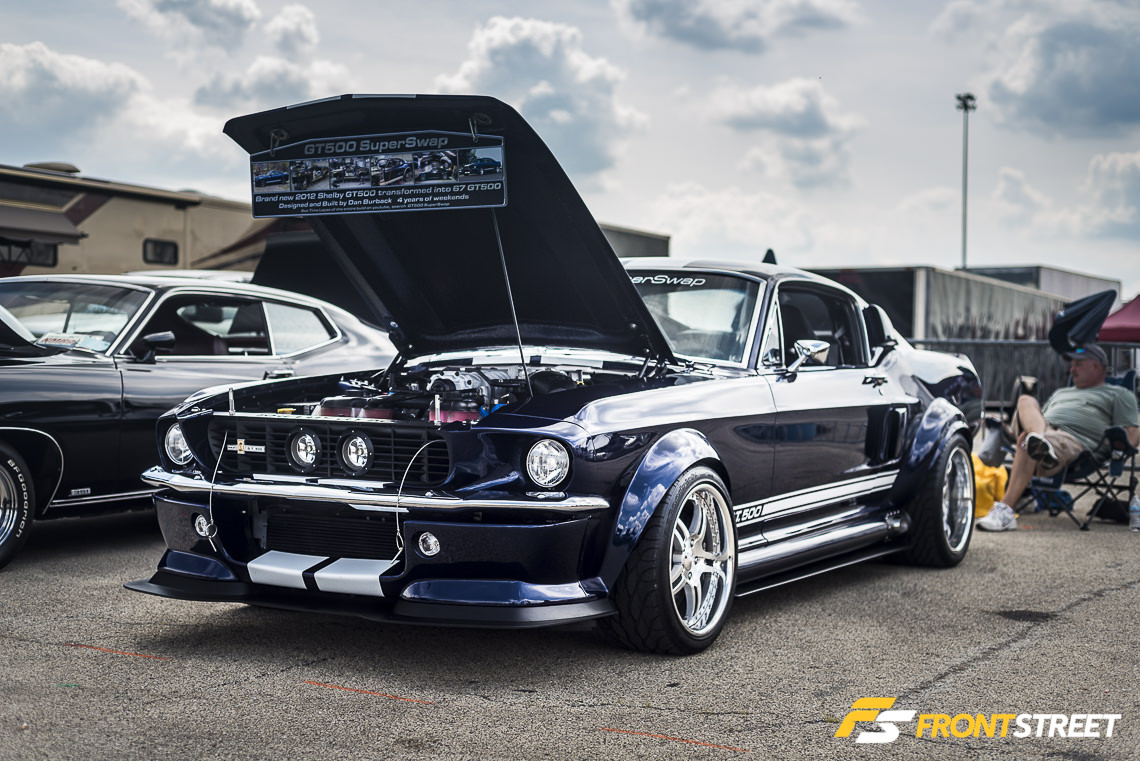
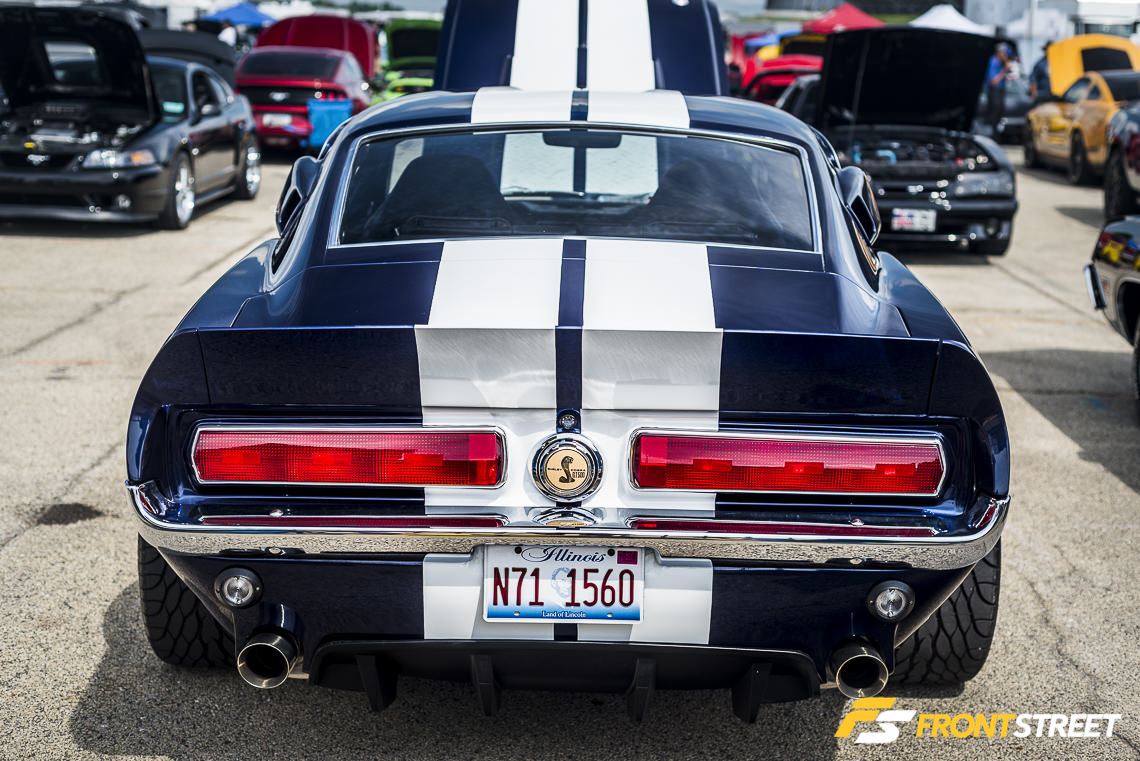
Another standout of the show was this 2012 Shelby GT500; the owner removed the 2012 body and replaced it with the panels from a 1967 Shelby GT500 for the ultimate combination of modern luxuries in a nostalgic body – and an expensive exercise in personalization. The car took the owner four years to complete from start to finish, but it was worth the effort, as it was one of the most interesting vehicles in the show lot.
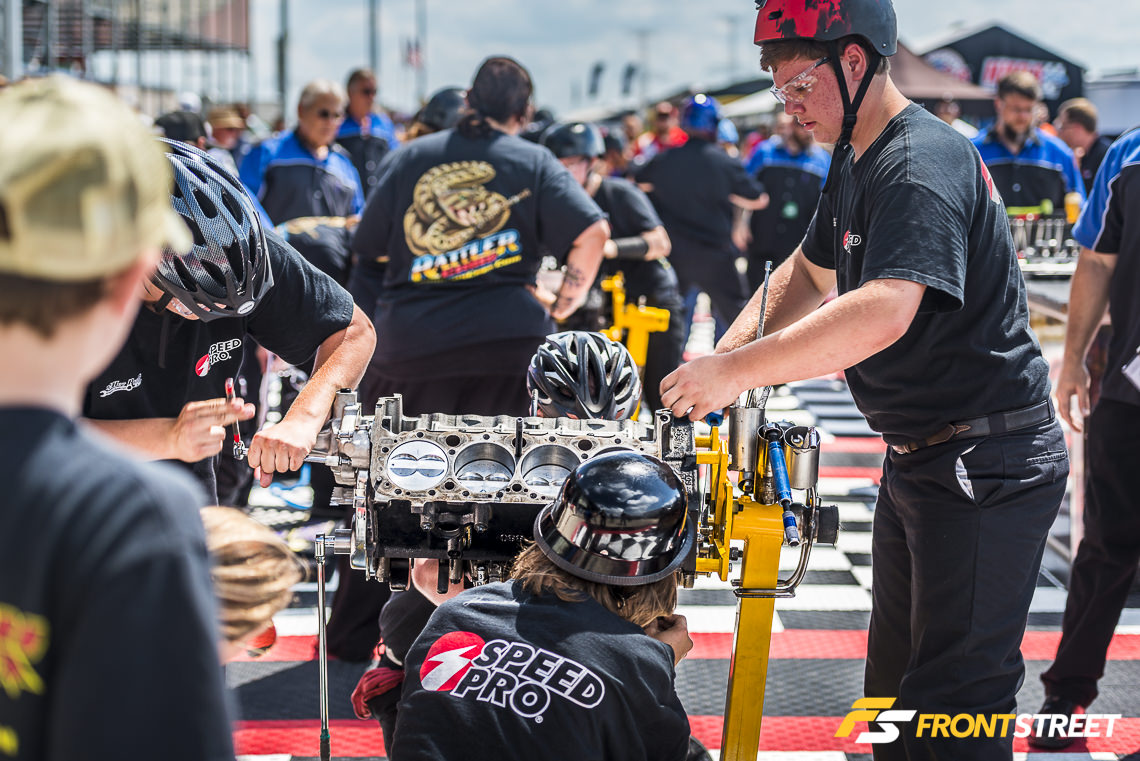
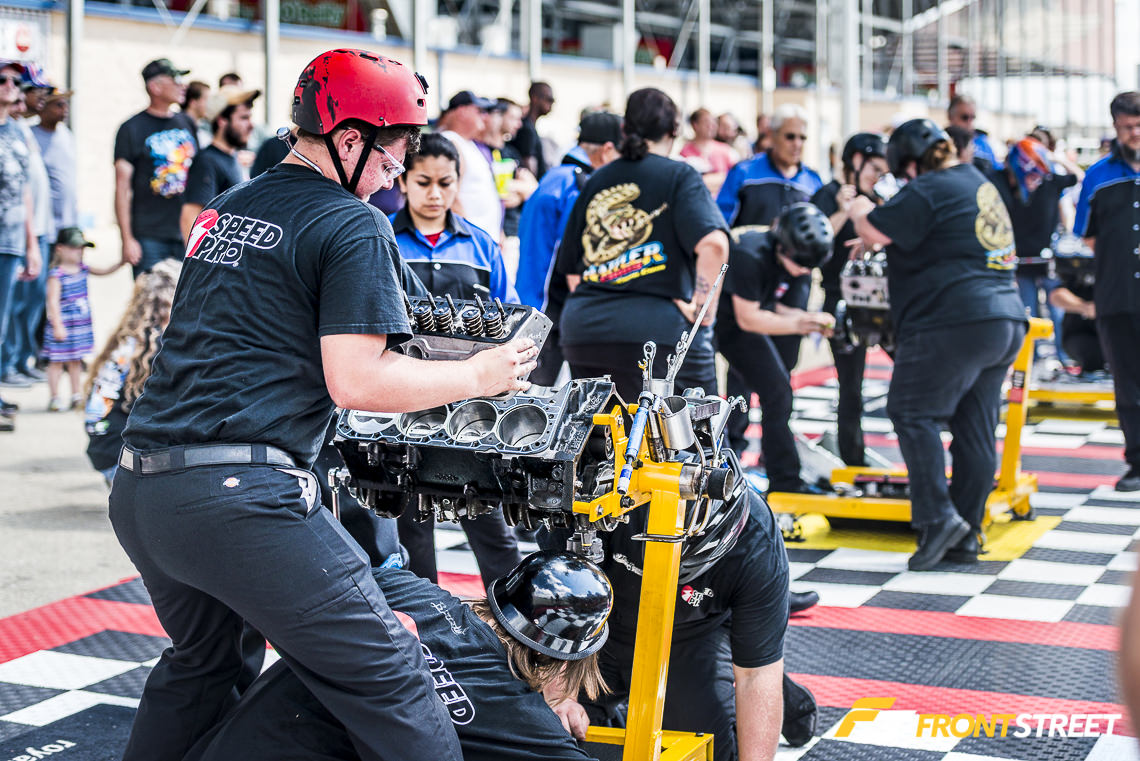
Before returning to the racing action, I stopped by this competition put on by the Hot Rodders of Tomorrow. This competition between rival high school technical programs forces the team members to work together to disassemble and reassemble this engine and be the quickest on the clock. These types of competitions are great experience for young soon-to-be race mechanics, and provide the perfect pressure-driven atmosphere to sample what professional engine builders deal with on a daily basis.
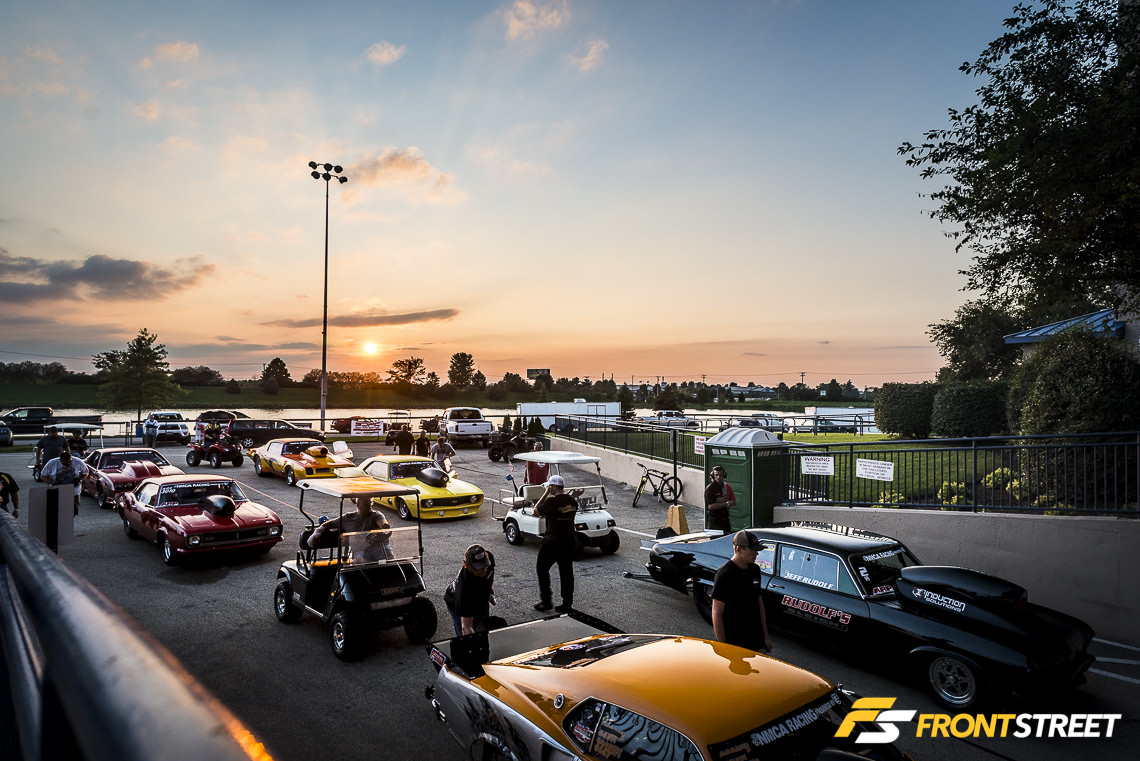
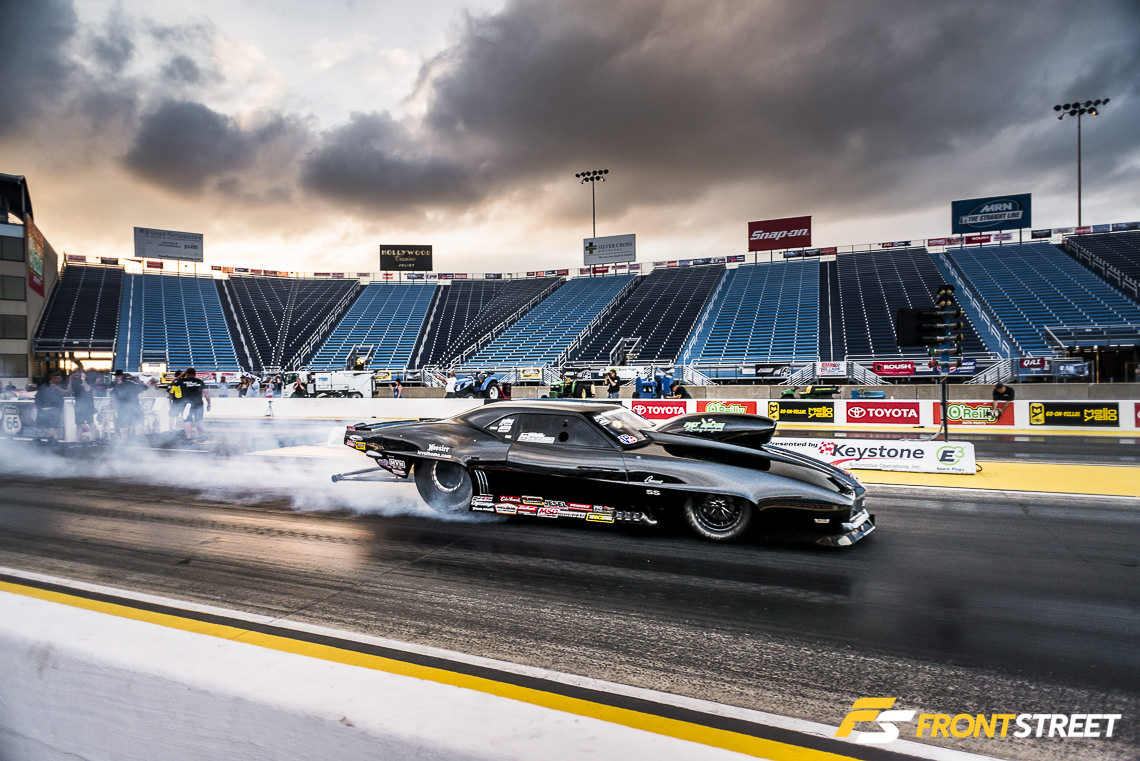
As the day wound down, the sun began to set and the ambient temperatures dropped as the racers lined up in the staging lanes. This drop in temperature increases the density of the air and makes the engines able to breathe easier, unlocking more horsepower. It also cools off the temperature of the racetrack, often opening a chance for the competitors to set new records in their respective race classes.
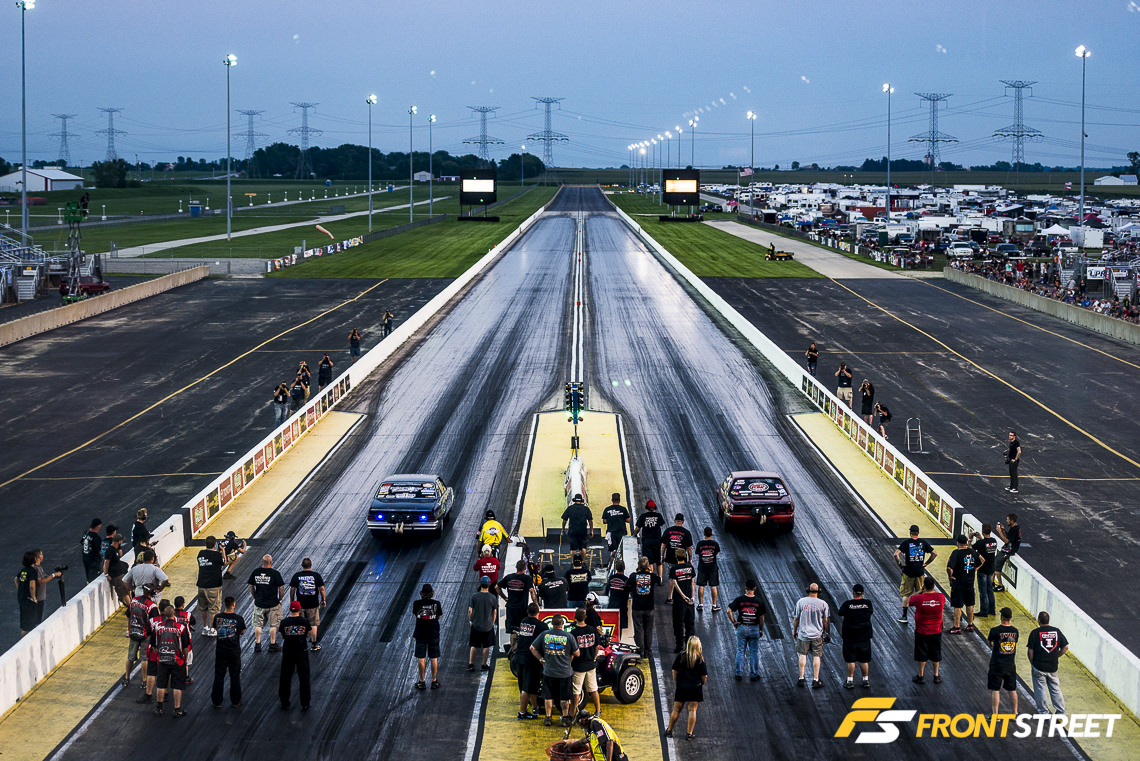
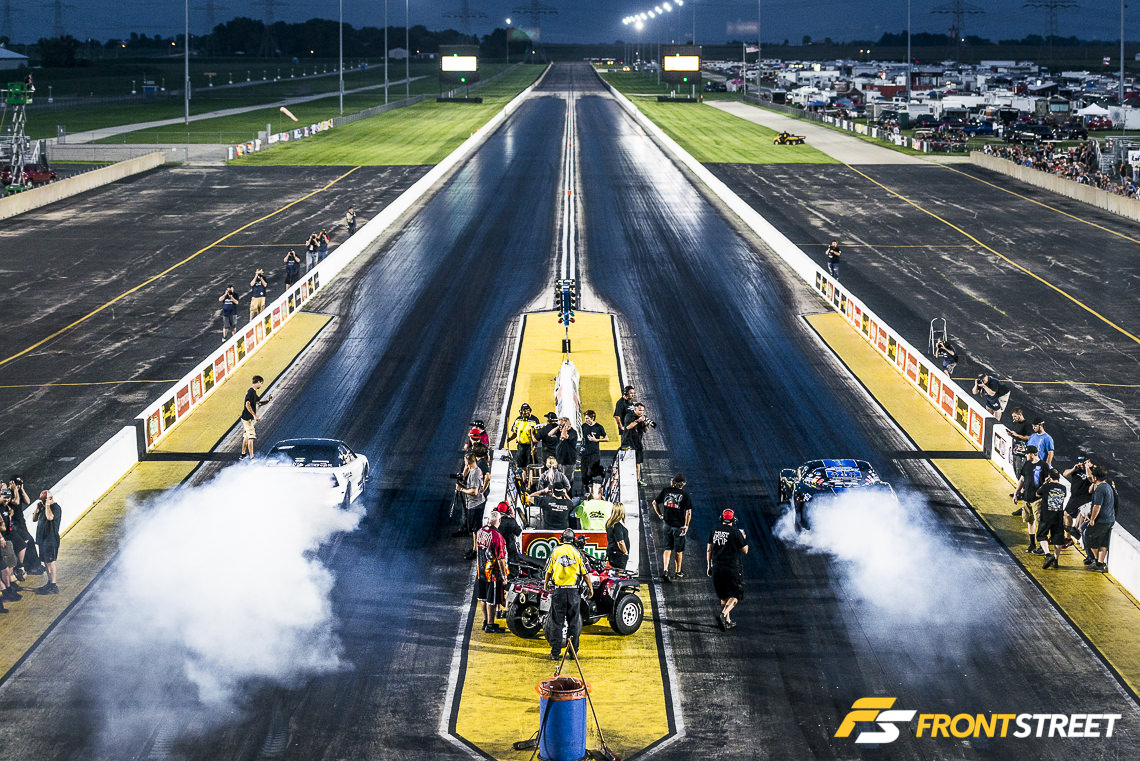
The racing continued under the lights and into the night in an effort to crown the winner of the NMRA/NMCA Super Bowl.
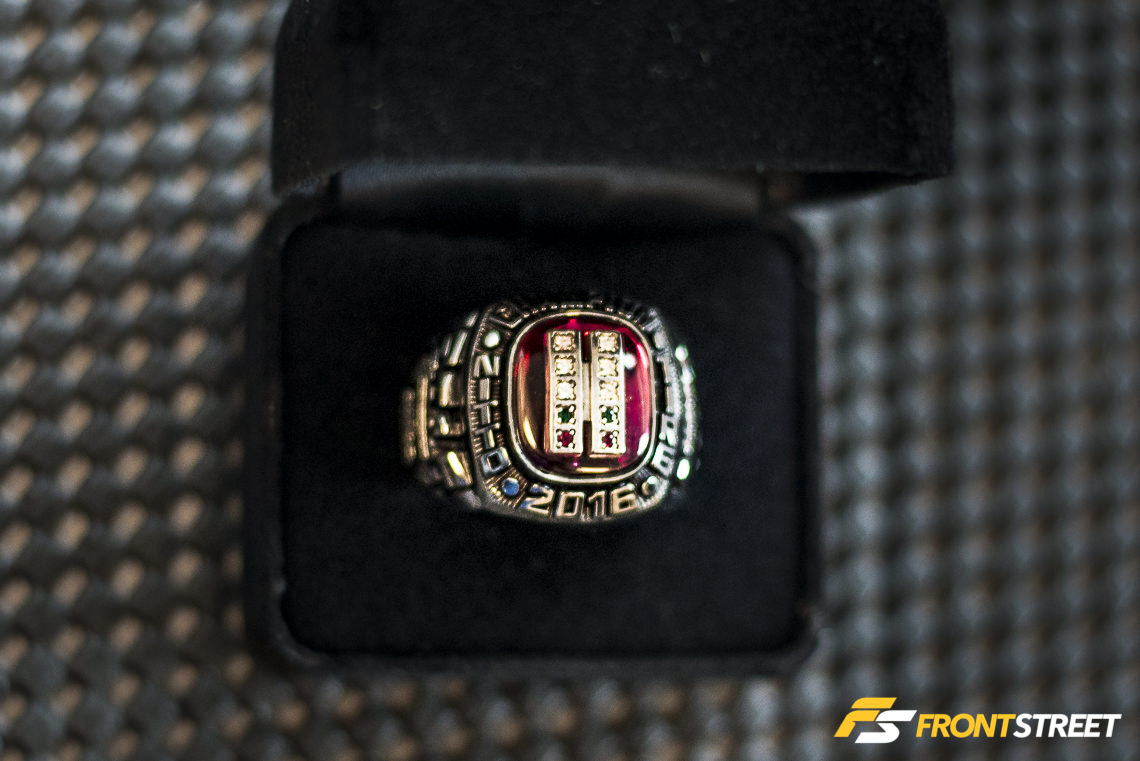
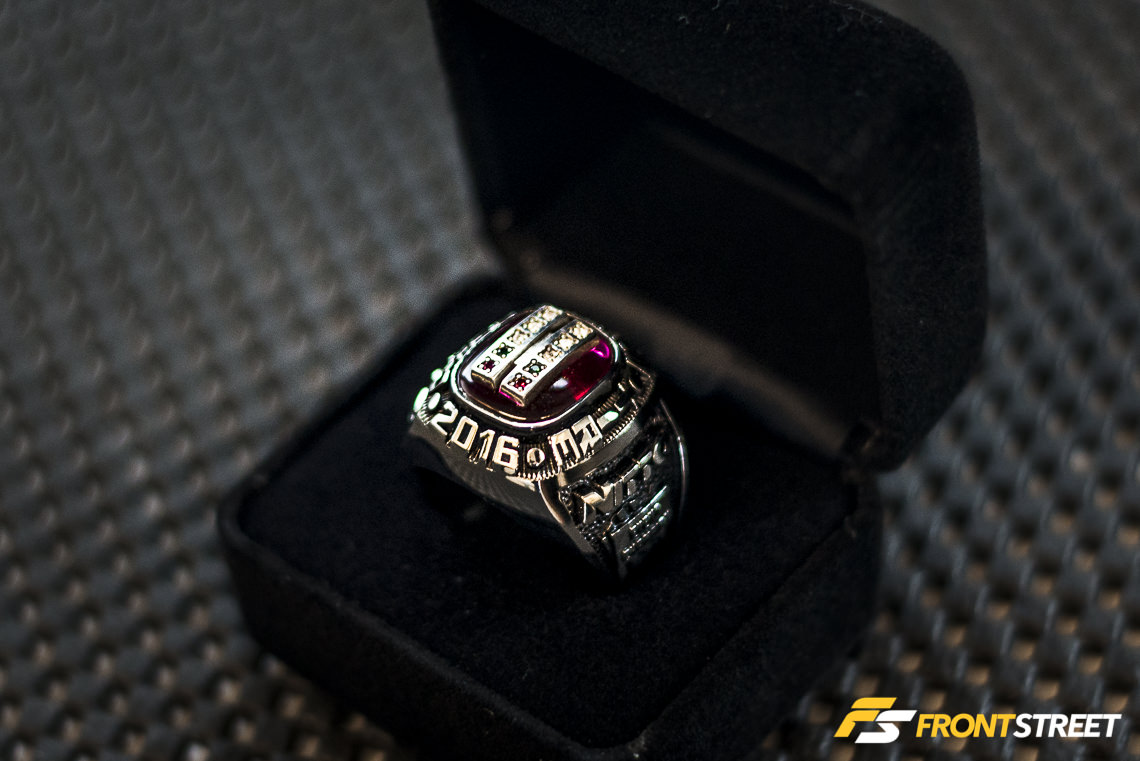
Each competitor at the Super Bowl is vying for the coveted ring presented to the winning team of this legendary event. The Diamond Tree ring shows two rows of stones including diamonds, emeralds, and rubies to create the “tree” that starts it all. It is an iconic piece of automotive jewelry.
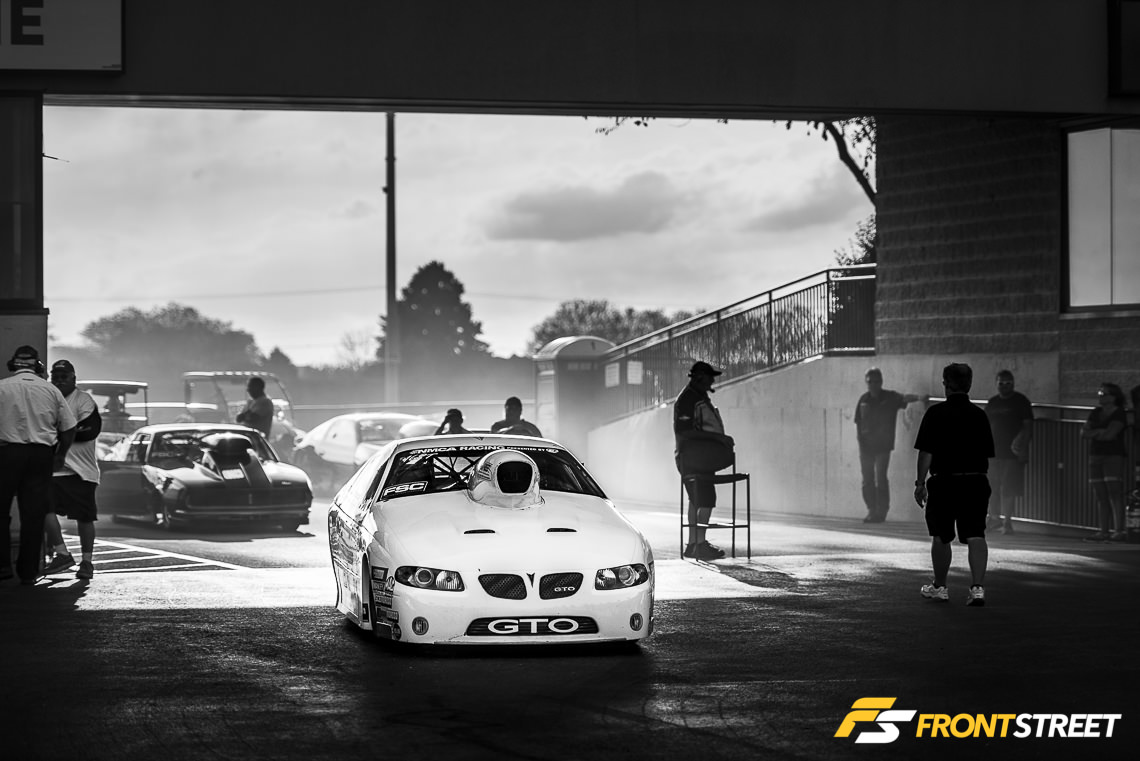
This was just as incredible an experience as I’d hoped it would be, and I can’t wait to attend another drag racing event of this caliber. Stay tuned for Front Street’s coverage of the NMRA World Finals stop later this year!




































